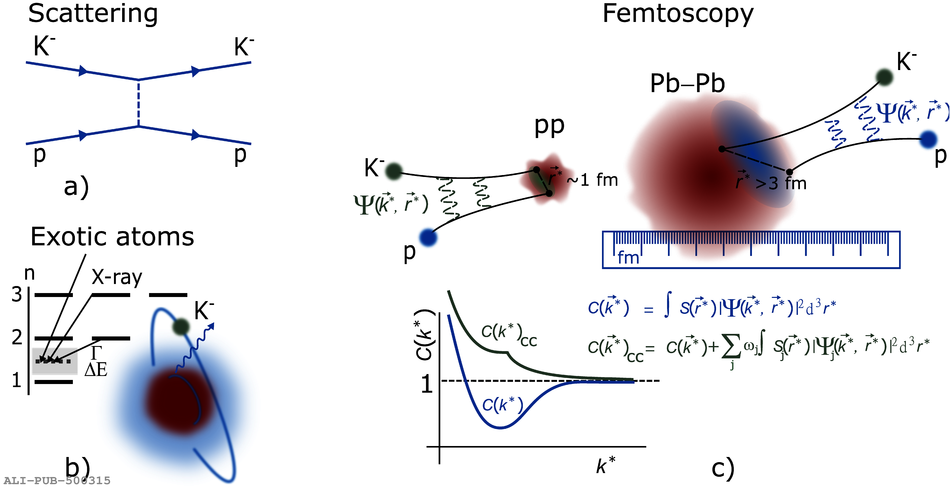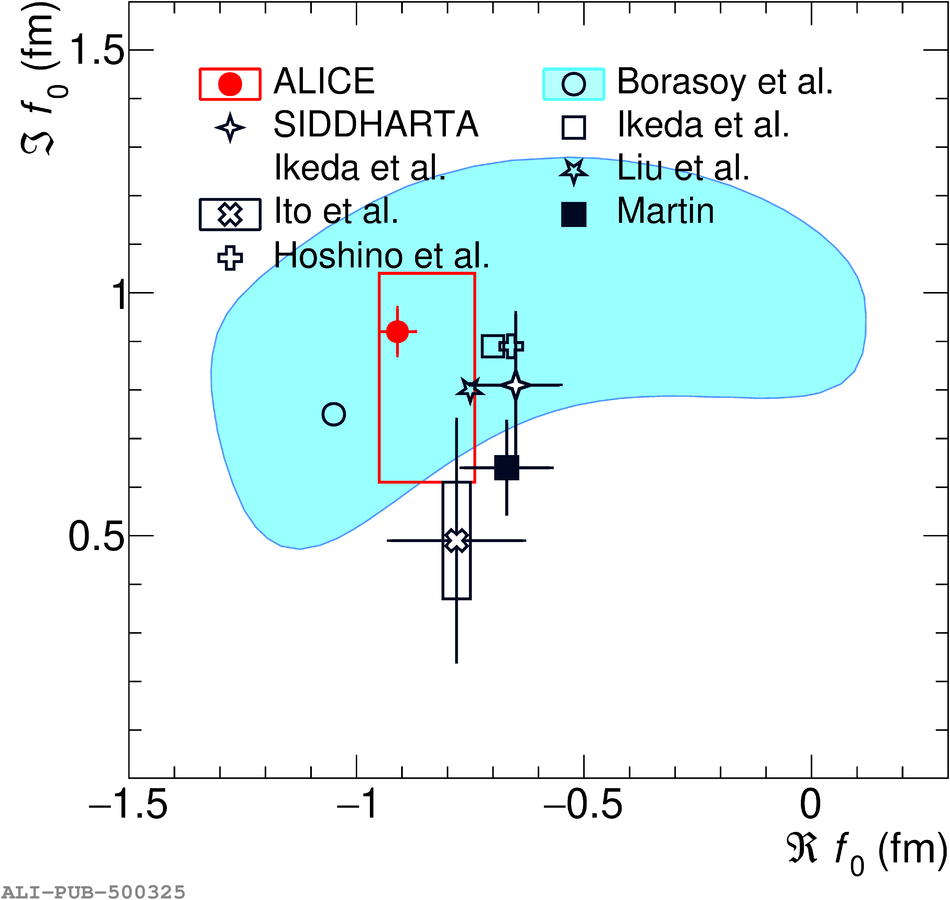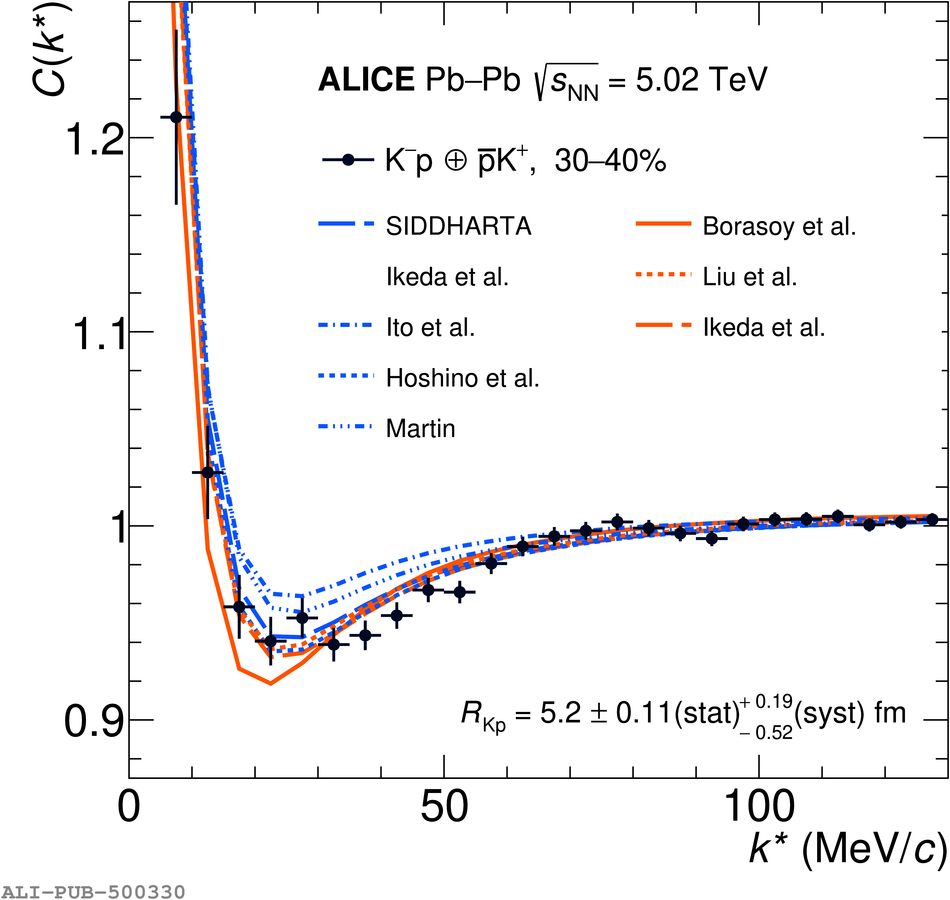In quantum scattering processes between two particles, aspects characterizing the strong and Coulomb forces can be observed in kinematic distributions of the particle pairs. The sensitivity to the interaction potential reaches a maximum at low relative momentum and vanishing distance between the two particles. Ultrarelativistic heavy-ion collisions at the LHC provide an abundant source of many hadron species and can be employed as a measurement method of scattering parameters that is complementary to scattering experiments. This study confirms that momentum correlations of particles produced in Pb-Pb collisions at the LHC provide an accurate measurement of kaon-proton scattering parameters at low relative momentum, allowing precise access to the $ {K}^{-} p\rightarrow {K}^{-} p$ process. This work also validates the femtoscopic measurement in ultrarelativistic heavy-ion collisions as an alternative to scattering experiments and a complementary tool to the study of exotic atoms with comparable precision. In this work, the first femtoscopic measurement of momentum correlations of ${K}^{-} p\ ({K}^{+}\overline{p})$ and ${K}^{+}p ({K}^{-}\overline{p})$ pairs in Pb-Pb collisions at centre-of-mass energy per nucleon pair of $\sqrt{s_{\rm NN}} = 5.02$ TeV registered by the ALICE experiment is reported. The components of the ${K}^{-} p$ complex scattering length are extracted and found to be $\Re f_0=-0.91\pm~{0.03}$(stat)$^{+0.17}_{-0.03}$(syst) and $\Im f_0 = 0.92\pm~{0.05}$(stat)$^{+0.12}_{-0.33}$(syst). The results are compared with chiral effective field theory predictions as well as with existing data from dedicated scattering and exotic kaonic atom experiments.
Phys. Lett. B 822 (2021) 136708
HEP Data
e-Print: arXiv:2105.05683 | PDF | inSPIRE
CERN-EP-2021-080




